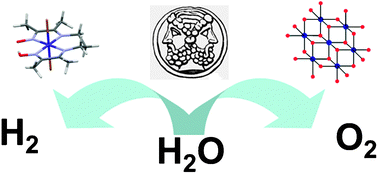Solar fuels generation and molecular systems: is it homogeneous or heterogeneous catalysis?†
Abstract
Catalysis is a key enabling technology for solar

- This article is part of the themed collection: Solar fuels
* Corresponding authors
a
Laboratoire de Chimie et Biologie des Métaux (CEA/Université Grenoble 1/CNRS), 17 rue des Martyrs, 38054 Grenoble cedex 09, France
E-mail:
vincent.artero@cea.fr
b
Collège de France, 11 place Marcelin-Berthelot, 75231 Paris cedex 05, France
E-mail:
marc.fontecave@cea.fr
Catalysis is a key enabling technology for solar

 Please wait while we load your content...
Something went wrong. Try again?
Please wait while we load your content...
Something went wrong. Try again?
V. Artero and M. Fontecave, Chem. Soc. Rev., 2013, 42, 2338 DOI: 10.1039/C2CS35334B
To request permission to reproduce material from this article, please go to the Copyright Clearance Center request page.
If you are an author contributing to an RSC publication, you do not need to request permission provided correct acknowledgement is given.
If you are the author of this article, you do not need to request permission to reproduce figures and diagrams provided correct acknowledgement is given. If you want to reproduce the whole article in a third-party publication (excluding your thesis/dissertation for which permission is not required) please go to the Copyright Clearance Center request page.
Read more about how to correctly acknowledge RSC content.
 Fetching data from CrossRef.
Fetching data from CrossRef.
This may take some time to load.
Loading related content
